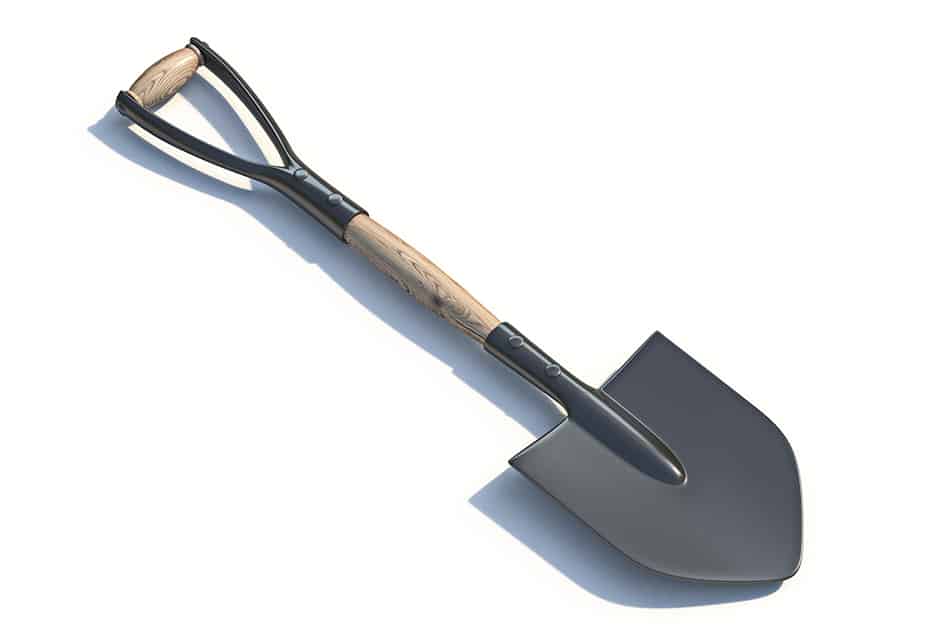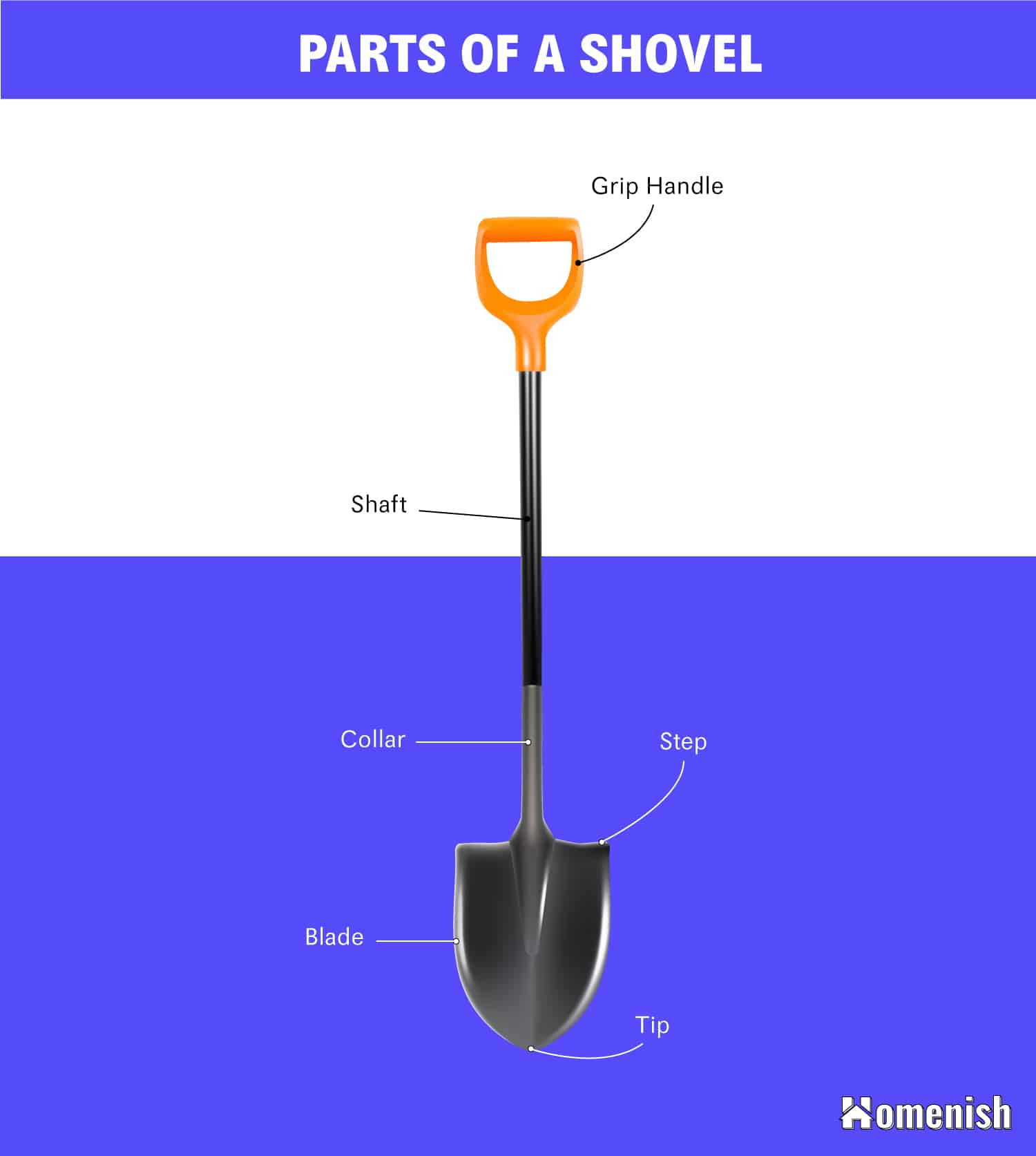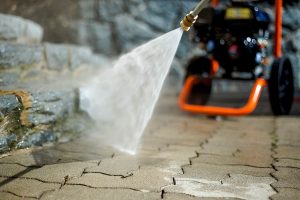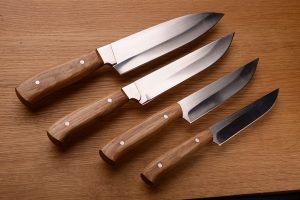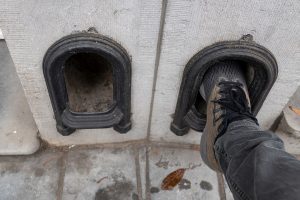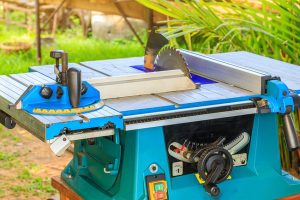There are several key parts that make up a shovel, and the design of each piece will vary depending on what the shovel is intended for.
From shoveling snow, digging up plants, or creating post holes, shovels are used for a range of outdoor tasks and are essential types of tools to have for the garden.
Learning about the parts of a shovel and the functions of each piece will help you to understand which shovel is best for which job and which features on the shovel will work best for your own circumstances.
This guide covers all of the parts of a shovel, including which materials work best for each part in different situations and scenarios.
There is also a diagram that identifies all important parts visually. This essential anatomy of a shovel is perfect for both experienced users and newcomers to the world of garden tools.
Grip Handle
This is the uppermost part of a shovel and will be the piece you hold with your hands when using the tool. Most types of shovel handles are D-shaped and will have a straight bar along the top and a curved lower edge, with enough space in the middle to put your hand through.
Depending on how you are using the shovel, you would usually hold the grip handle by wrapping your fingers over the top of the handle and your thumb on the underside of the top bar.
Shovel handles can be made from various materials, and it’s important to pay attention to the type of handle on a shovel you are buying as this can greatly affect your comfort when using the tool.
Wood, fiberglass, or metal handles are often referred to as ‘no grip handles because they don’t offer great grip. These are fine for occasional use, but if you are using the shovel for long periods of time, you can expect your hands to feel it afterward.
For a more comfortable and ergonomic grip, choose a handle made from silicone or rubber. These handles will be easier on the hands and also provide a firm hold to reduce the incidence of accidents. In some instances, a shovel may have no grip handle at all, and in this case, the user would hold onto the top part of the shaft to operate the shovel.
Shaft
The shaft of a shovel is the pole that is connected to the handle. The shaft can vary in length and in material, and both of these factors can alter the function of the shovel and how well it performs. Metal or fiberglass shafts tend to be the most long-lasting as they are strong and durable, but they are also generally the most expensive.
Wooden shafts are a good choice and can last a long time if they are cared for well and kept inside when not being used. They are susceptible to breakages if put under a lot of pressure but are popular among those who prefer natural materials.
Some shovels, primarily snow shovels, can have plastic handles. The type of plastic used will drastically affect how strong the shovel is and whether it is likely to snap. For light snow removal, plastic will be suitable, but for regular and heavy snow removal, it would be worth investing in a shaft made of stronger materials.
Most shovel shafts are straight, but curved shafts can be found, which help to combat back pain associated with shoveling.
Collar
This part of the shovel is also known as the socket. It is the part of the tool which connects the shaft to the blade portion of the shovel. The collar needs to be strong as it will be put under a lot of pressure during use, so this element is usually made from metal.
The best shovels will have a collar that attaches to the shaft using rivets or screws, which can be removed in the event that the shaft needs to be replaced. More basic shovels might have the collar connected to the shaft using glue, but these types of shovels will only stand up to light use before the shaft separates from the collar.
Step
The step of a shovel is the top, flat part of the blade. It is also known as the kickplate and is most commonly found on shovels that are intended for digging, as it allows the user to transfer the power of their body weight into the shovel by standing on the step, thereby forcing the blade deeper into the ground.
This part of a shovel will help to reduce back and arm strain, as the user can utilize their body weight as a force instead of using muscles. Some shovel steps will have ridges where shoes can grip, to reduce the likelihood of feet slipping and injury.
Blade
The blade of a shovel is also known as a ‘scoop’ because it is the part of the tool that scoops up materials such as soil, snow, or gravel. The blade can vary in size, shape, and material. Snow shovels typically have plastic blades, whereas garden shovels can have aluminum, fiberglass, or steel blades.
Shovels that are intended for digging will usually have a broader, flatter blade, whereas shovels intended for moving materials will have a more curved or angled blade to allow it to scoop up more at once.
Tip
The tip of a shovel is the sharp, cutting edge, which is the lowest point on the tool. This is the part of a shovel that will make contact with the ground when it is used for digging, and it can take various shapes depending on the intended use of the tool.
A pointed or curved tip works well for digging or cutting, as it will slice more easily through the ground and can be used for chopping up any roots you discover. For scooping and moving, shovels with flat tips work best as they have more surface area for holding materials but will be much less effective at breaking into the hard ground for digging.
